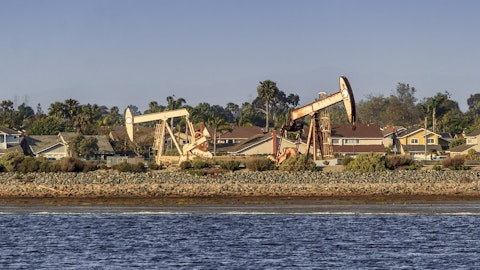Key Risks
There are four key risks to be aware of when investing in Exxon.
First and foremost, never forget that oil & gas prices are highly volatile and cyclical in nature. And as this oil crash has showed us, no one can predict the short-term fluctuations of energy prices, or how long they might remain low.
While management has shown itself the best in the world at cutting costs and squeezing out maximum profitability from its assets, there is only so much cost cutting that can be accomplished in a sustainable fashion. After all, oil fields naturally decline in production over time and require a minimum amount of maintenance investment to keep the oil flowing.
So the largest risk to Exxon is that oil & gas prices remain at suppressed levels for several more years. Ironically, this risk is increased because of the very efficiency gains that Exxon and its rivals have accomplished in the last few years.
For example, thanks to new and improved fracking technology, such as more advanced drilling rigs, horizontal drilling, longer laterals, more fracking stages, and increased use of frack sand, production costs have fallen to levels that allow cash flow break even at much lower oil prices than previously believed possible.

And thanks to over 3,900 drilled but uncompleted, or DUC (i.e. not yet fracked), wells in the US, shale producers could very quickly ramp up US production once oil prices rise even a little.

In fact, in the last few months, when West Texas Intermediate, the US oil standard, rose above $50 per barrel, we’ve seen a surprising number of rigs once more start drilling. Specifically Baker Hughes (BHI) just reported that the number of US drilling rigs rose for the third straight week, and the eighth increase in 10 weeks, to 524. That’s compared to a May low of 406.
And since each rig is able to drill more efficiently, there is always the risk that US shale oil will become a fast-paced swing producer, which increases production quickly as oil prices potentially rise due to OPEC’s recent agreement to cut production (2).
In other words, US oil producers might end up raising production as OPEC supply declines, capping the rise in crude to around $55 to $60. While that would be a big improvement to recent years, and a continued boon to global energy consumers, it would do no favors for Exxon’s balance sheet.
In fact, S&P (SPGI) recently downgraded Exxon from its coveted AAA credit rating, which it held since 1949. Specifically the rating agency said that: “credit measures, including free operating cash flow (FOCF) to debt and discretionary cash flow (DCF) to debt, will remain below [its] expectations for the ‘AAA’ rating through 2018.”




